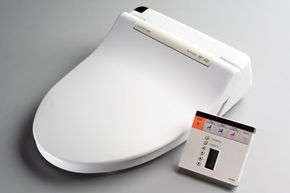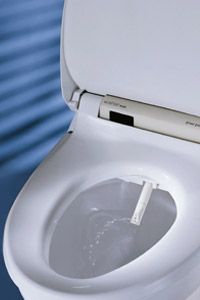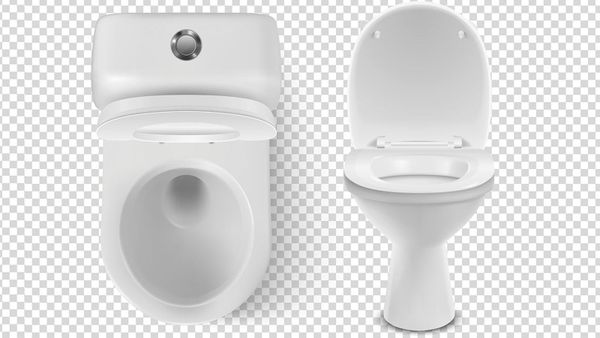Whether you call it the toilet, loo, water closet, restroom or bathroom -- everybody uses it. But how everybody uses it differs all over the world, as bathroom technology tends to vary from region to region. Much of the Eastern world uses a squat toilet, which is often nothing more than a porcelain-lined hole in the ground that may or may not include a flushing mechanism (and often requires you to bring your own toilet paper). In most of Europe, you'll find a bidet, which sprays a stream of water to clean the genitals after use. And in the United States, most people use a flush toilet that allows sitting -- or squatting -- and the use of toilet paper. But some companies, such as Japan-based Toto, have recently started to lead a revolution that combines the bidet with the Western toilet.
Toto's creation, the Washlet, is a unit that fits onto standard flush toilets, allowing users the comfort of American sit-down toilets with the cleansing rinse of a bidet's water jet after finishing their business. There are four models of the Washlet available in the U.S., ranging in cost from about $880 to more than $2,200. The pricier the model, the more bells and whistles it offers. Users can opt for a simple version, the C110, which has rear- and front-cleansing options, water pressure and temperature control and a heated seat. The most advanced model, the S400, includes all those perks plus a warm-air drying feature, an automatic air purifier, an auto-flush option and more. With a laundry list of multiple key features, the Washlet can be customized for even the pickiest user.
Advertisement
Washlet proponents argue that the unit's gentle spray of water offers a more hygienic cleaning than a wad of triple-ply toilet paper does. But skeptics question whether a machine is as easy to clean off with as your hands. For instance, how does the high-tech seat know when it's time to rinse? Additionally, will Americans -- who have been reluctant to use bidets -- open this advancement with open arms? We'll find out in this article. But first, let's take a look at the European device that helped inspire the Washlet to begin with.


